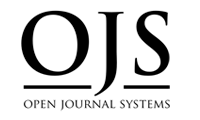Particle board using rice husk and coconut fibre
Contenido principal del artículo
Resumen
Particle boards are one of the primary products used in buildings and furniture sectors. These materials are manufactured under pressure, by combining wood particles and other lignocellulosic fibrous materials by using an adhesive. The extensive use of particle boards can add to the economic advantage of low-cost wood raw material, inexpensive agents and, simple processing. For the manufacturing of particle boards based on renewable resources, the search for lignocellulosic substitutes for wood is one of the biggest challenges that the wood industry is facing. In this project, particle boards were made using rice husk and coconut fibre, as a substitute for wood. Rice husk is the hard-protective shell of grains, obtained from rice mill. Coconut fibre is the natural fibre extracted from the coconut husk. Three boards of different coconut fibre content (15%, 20%, and 25%) were casted. The coconut fibre and rice husk were exposed to Alkali Treatment to make the fibre free from hydrophobic substances. They were then processed into particle board using poly-ester resin as binder. The effect of fibre content on Density, Water Absorption (WA), Thickness Swelling (TS), Modulus of Rupture (MOR) and Modulus of Elasticity (MOE) were analyzed. This investigation appears as a better solution for environmental problems associated with wastes and it is economical to use for the manufacturing of composite fibre boards.
Detalles del artículo

Esta obra está bajo una licencia internacional Creative Commons Atribución-NoComercial-CompartirIgual 4.0.



